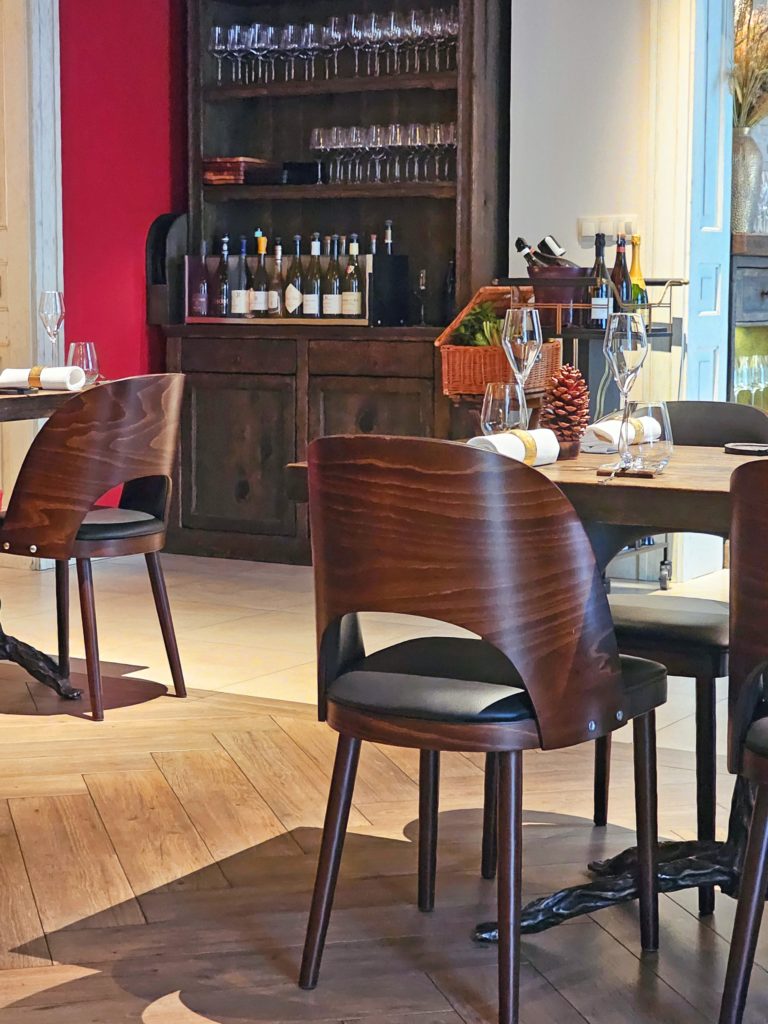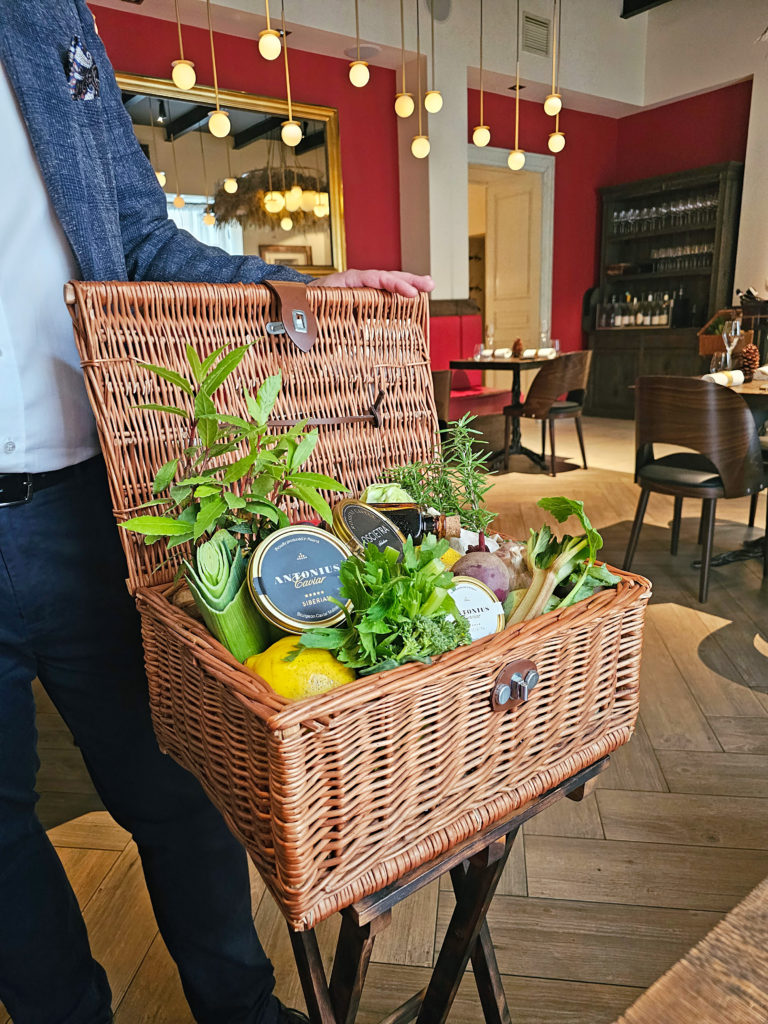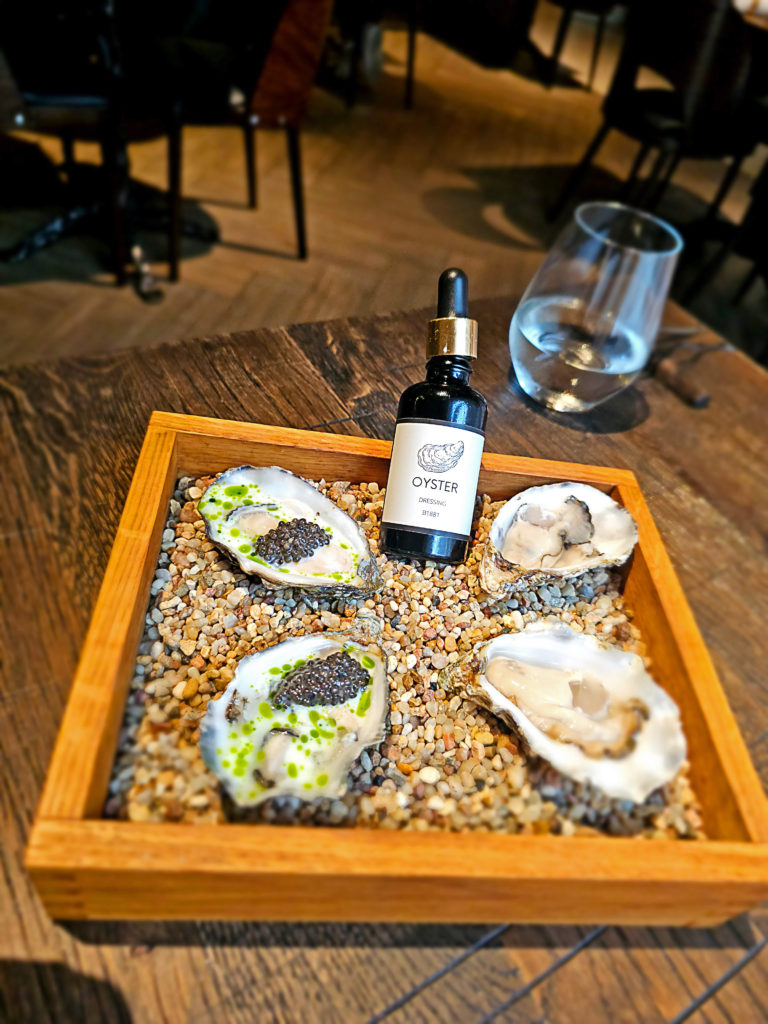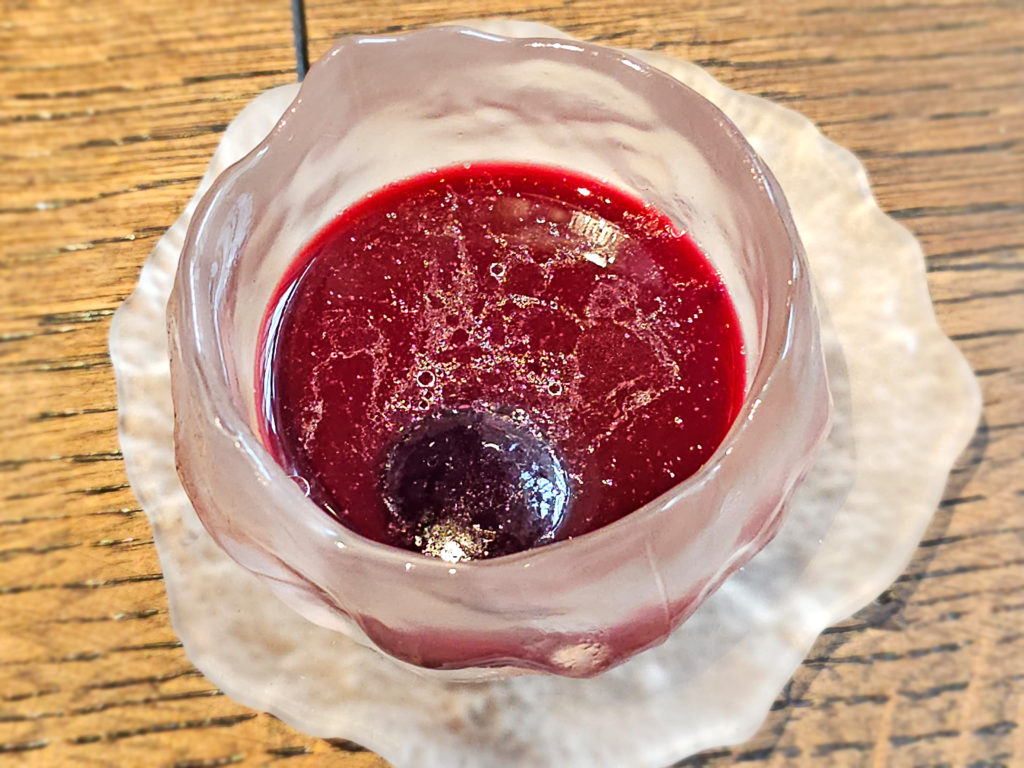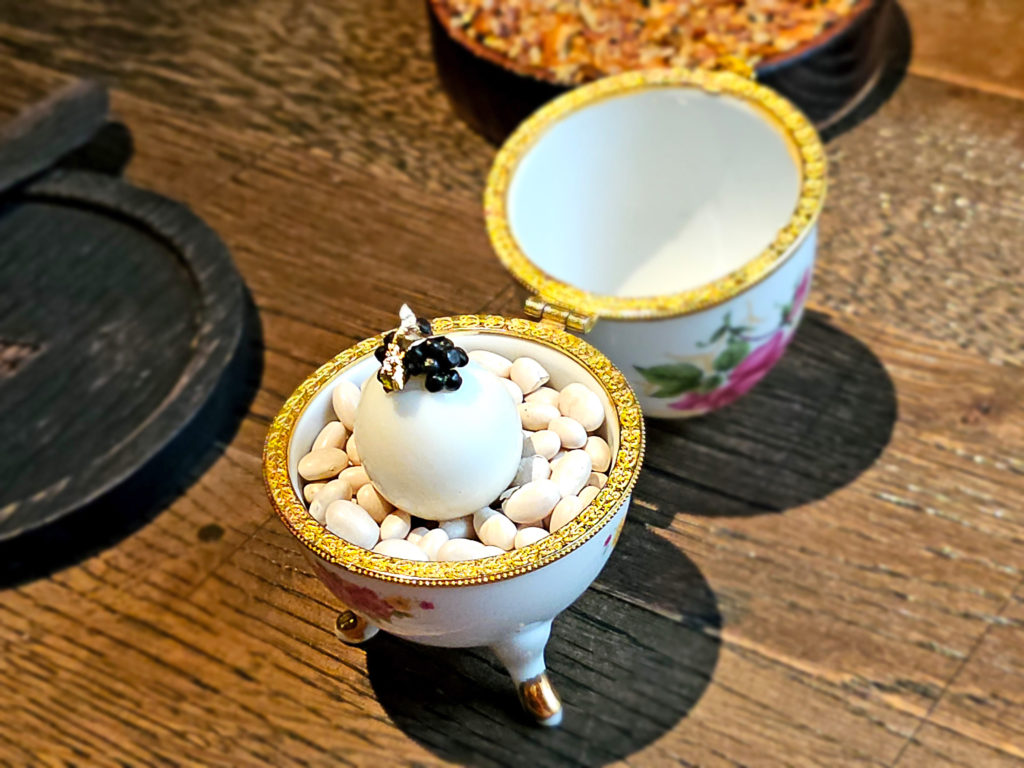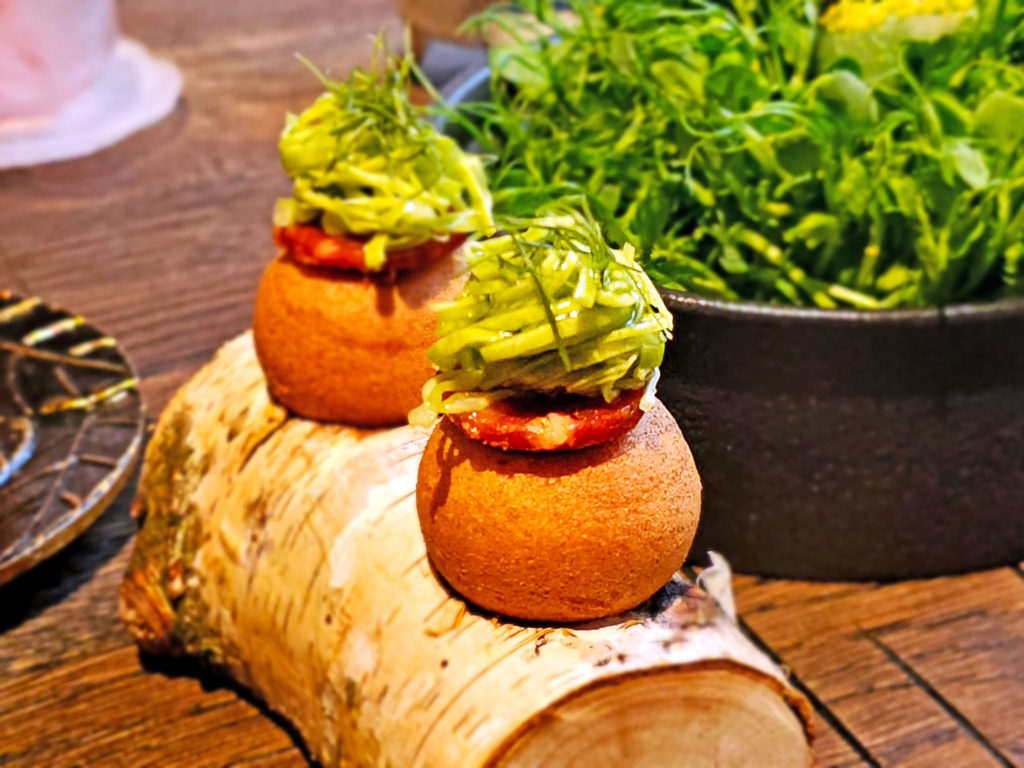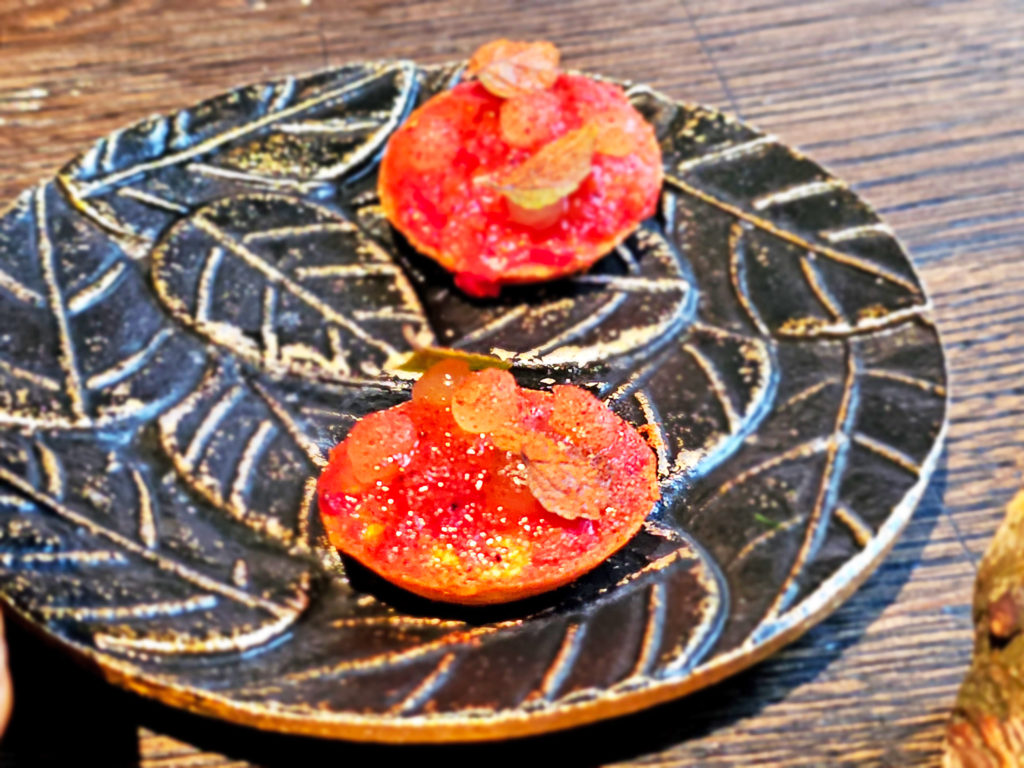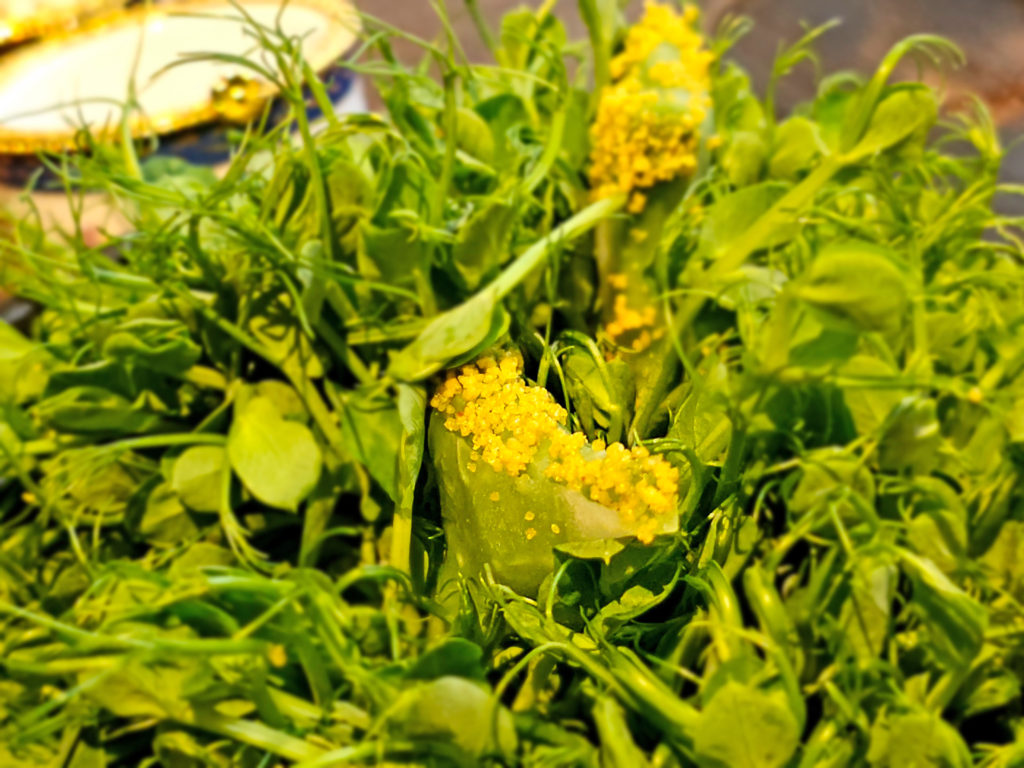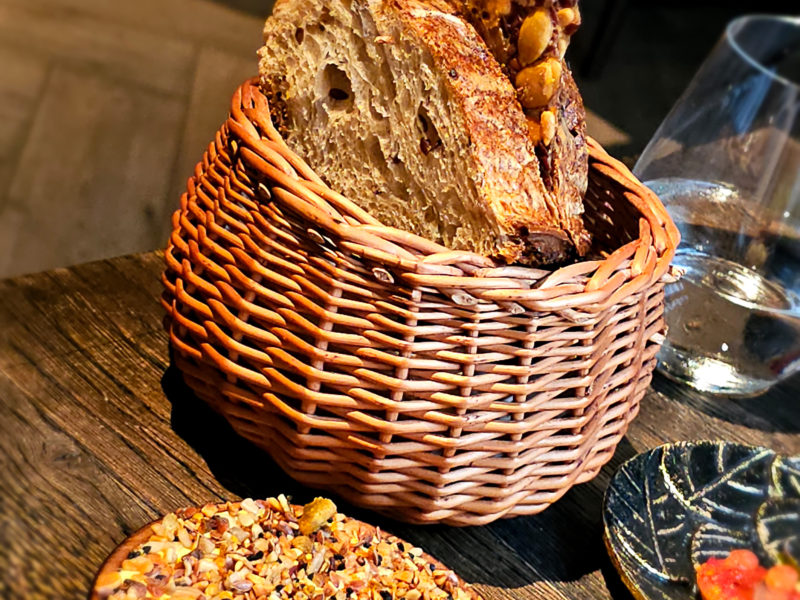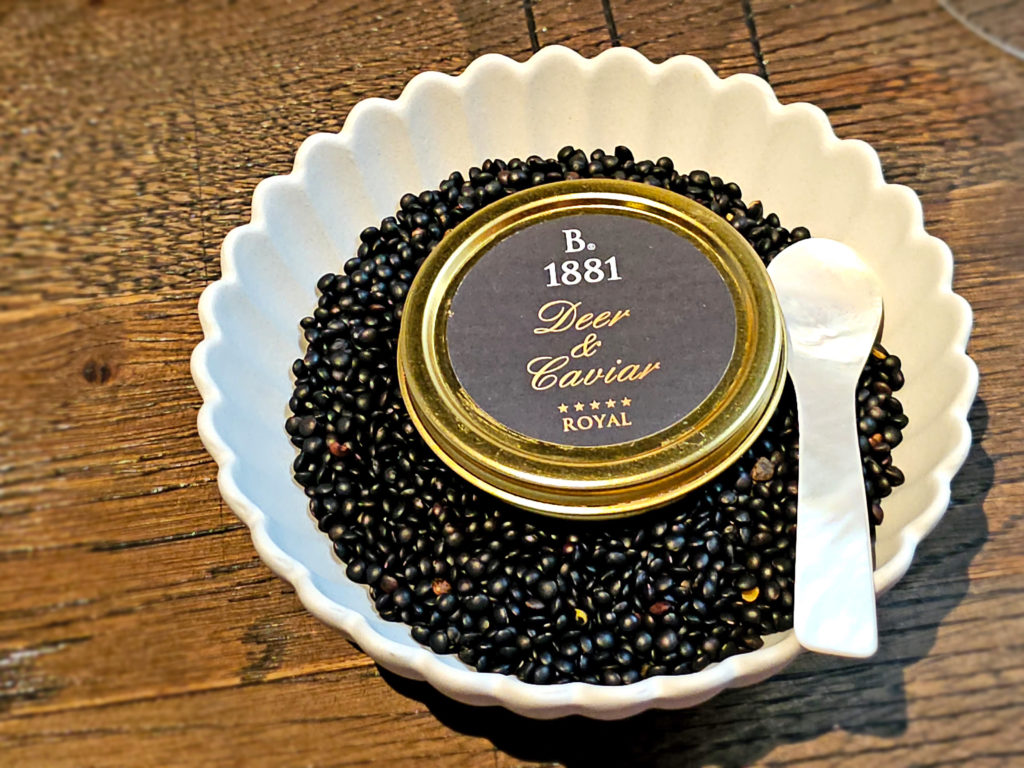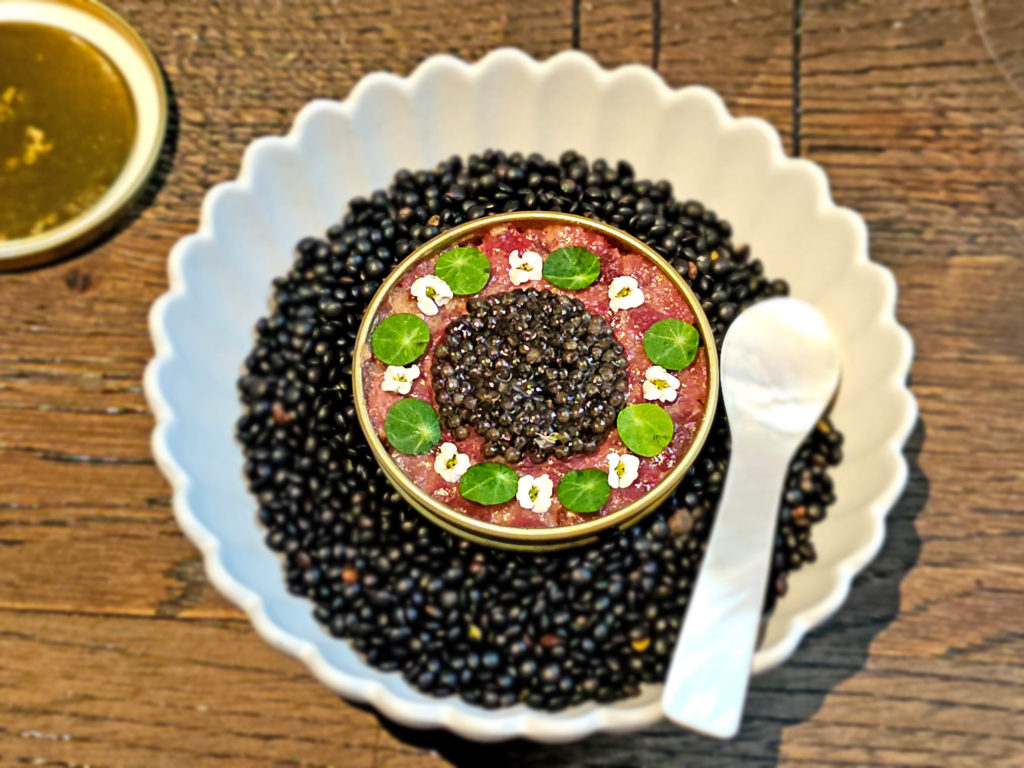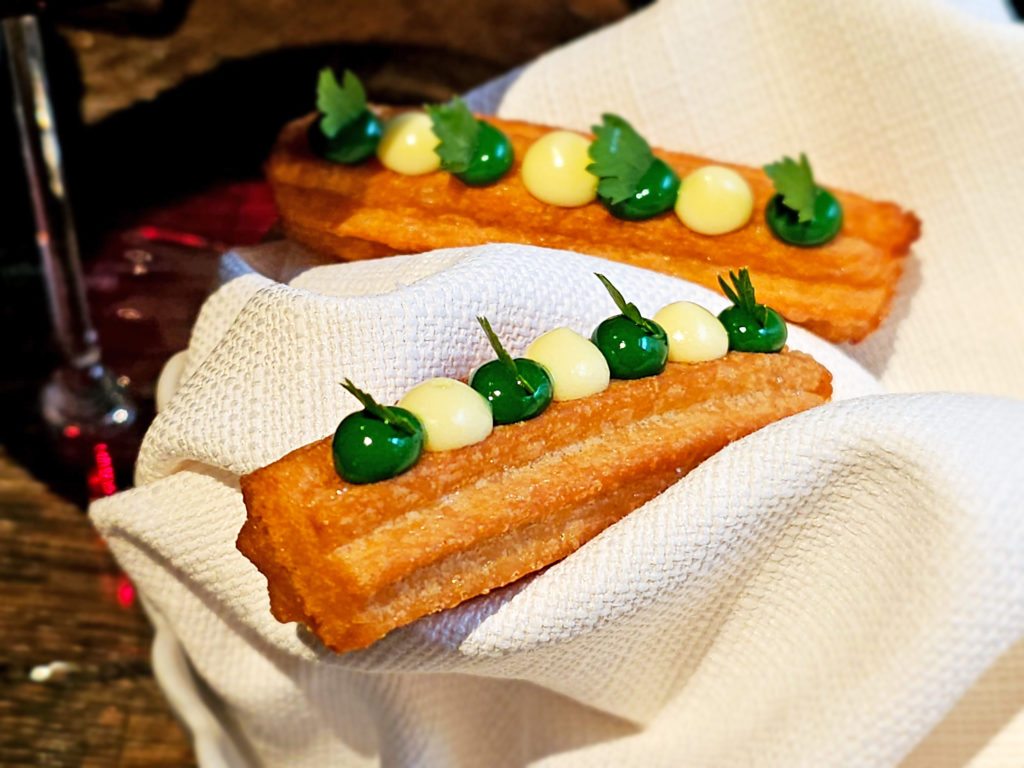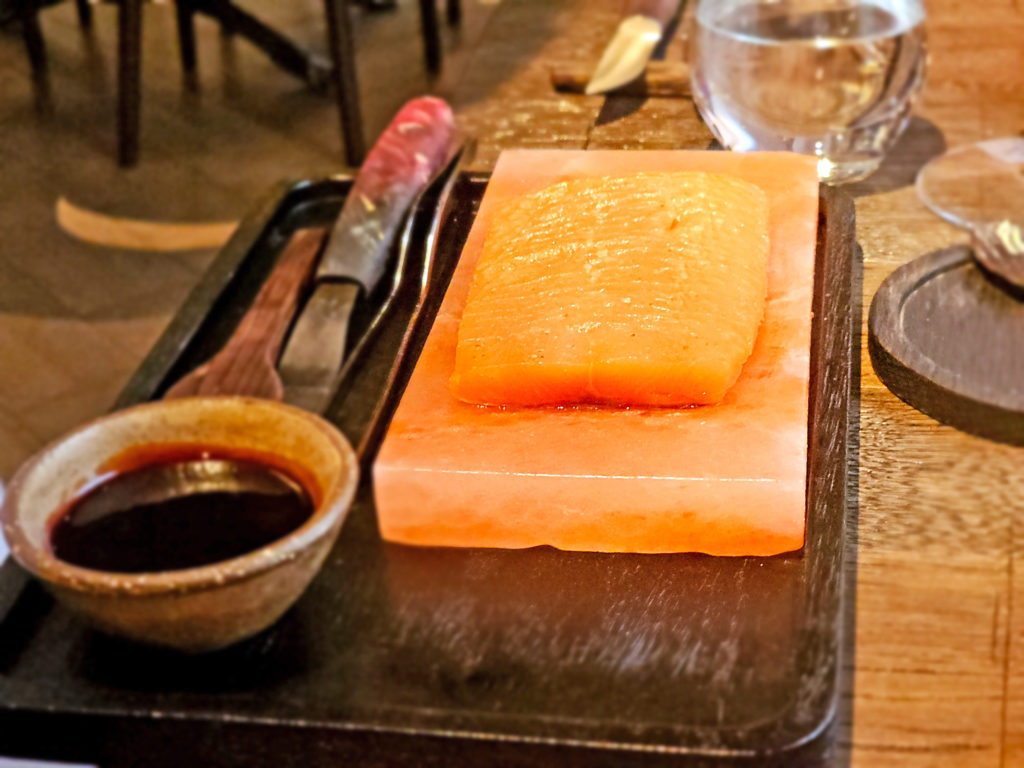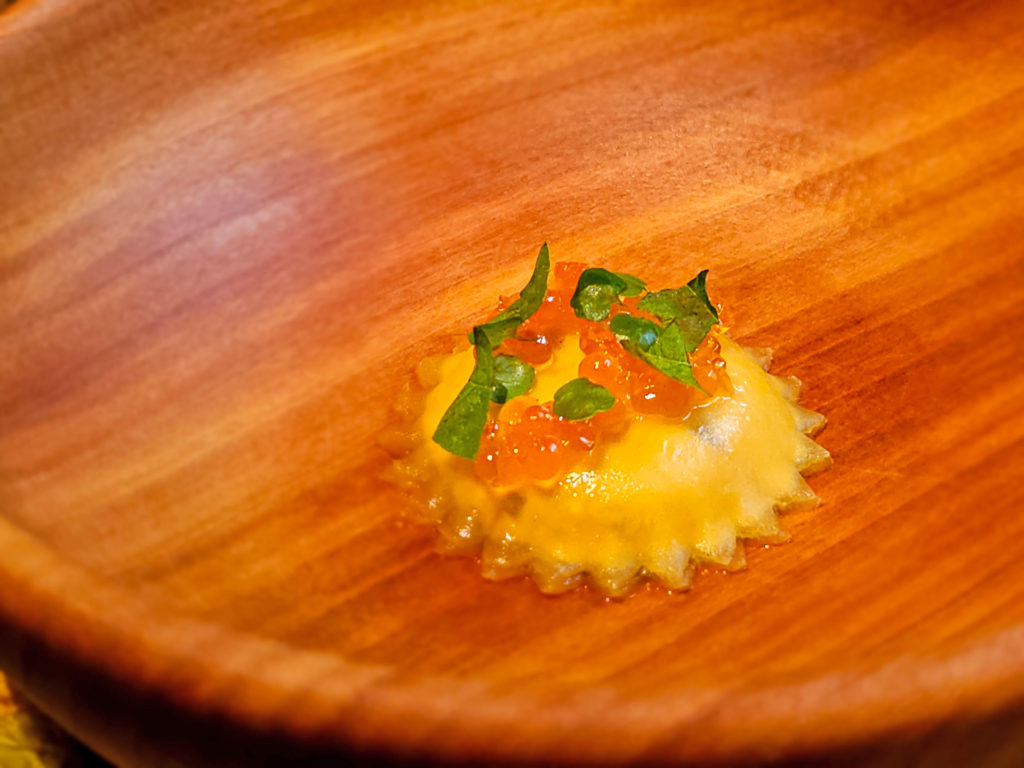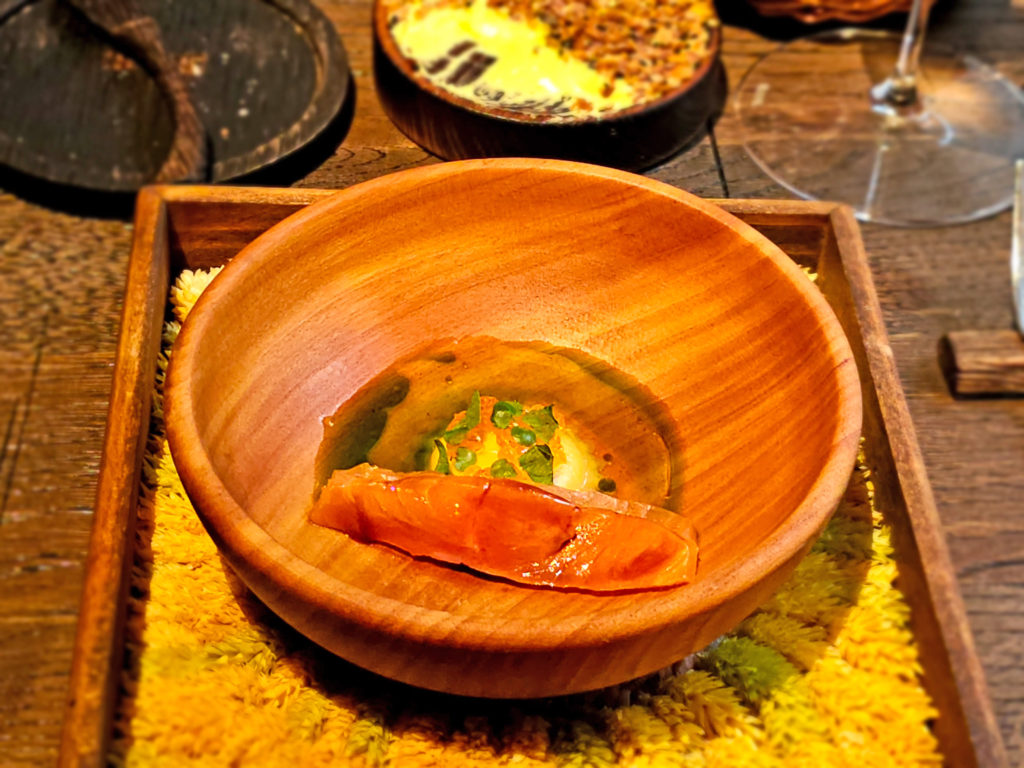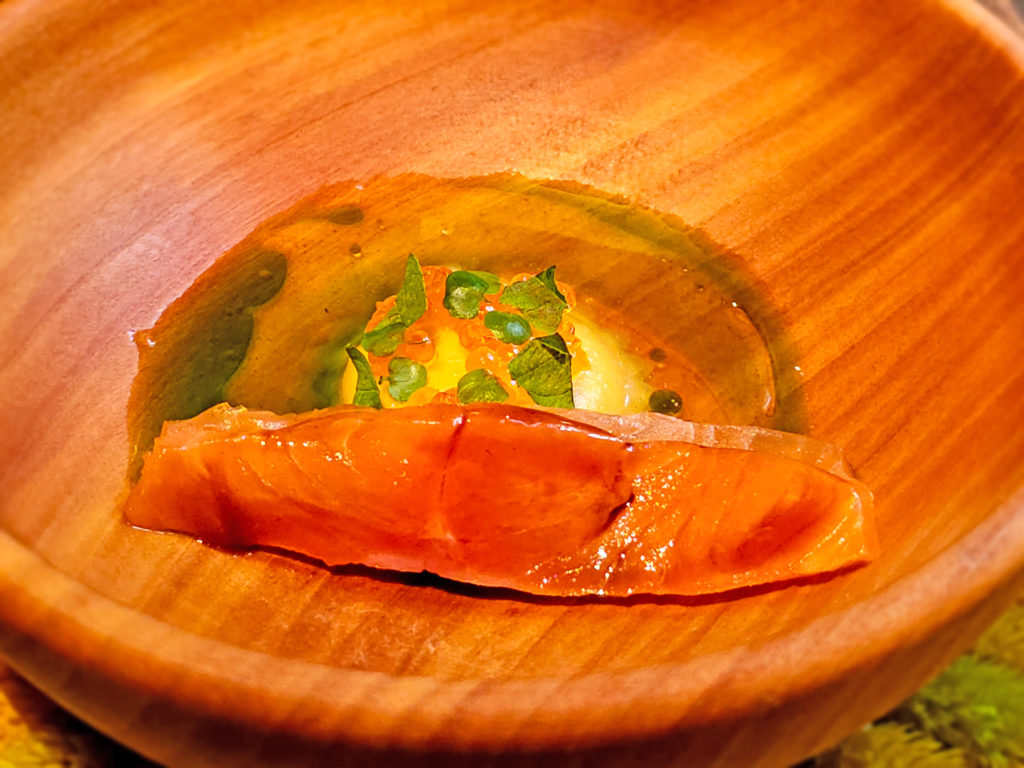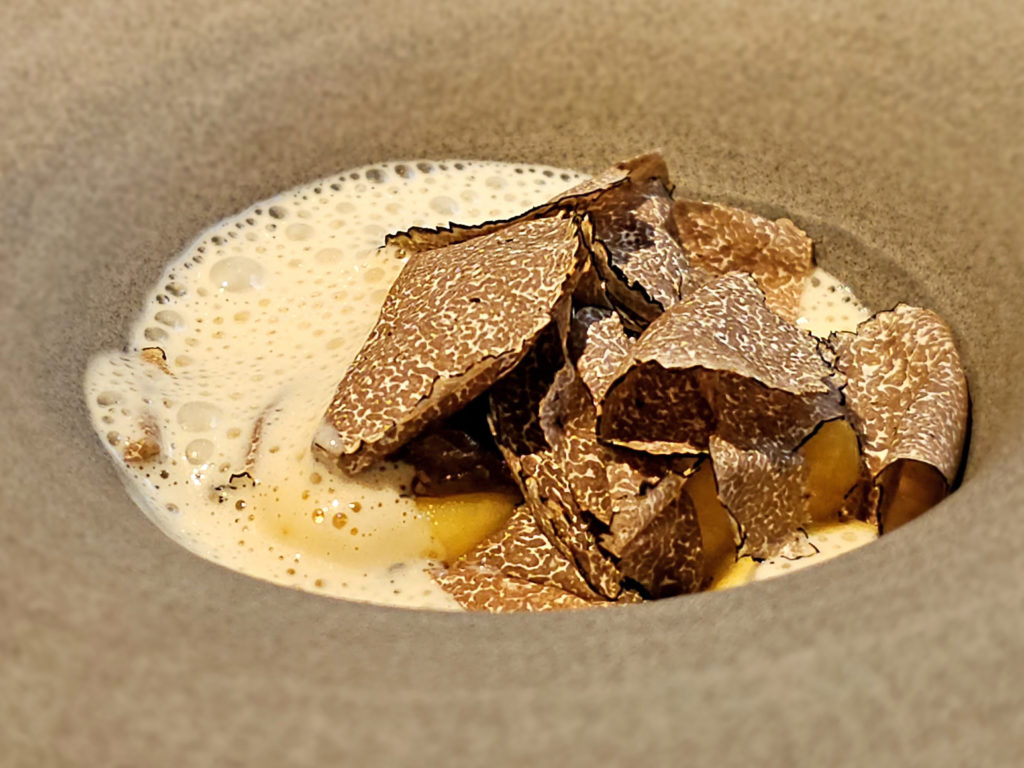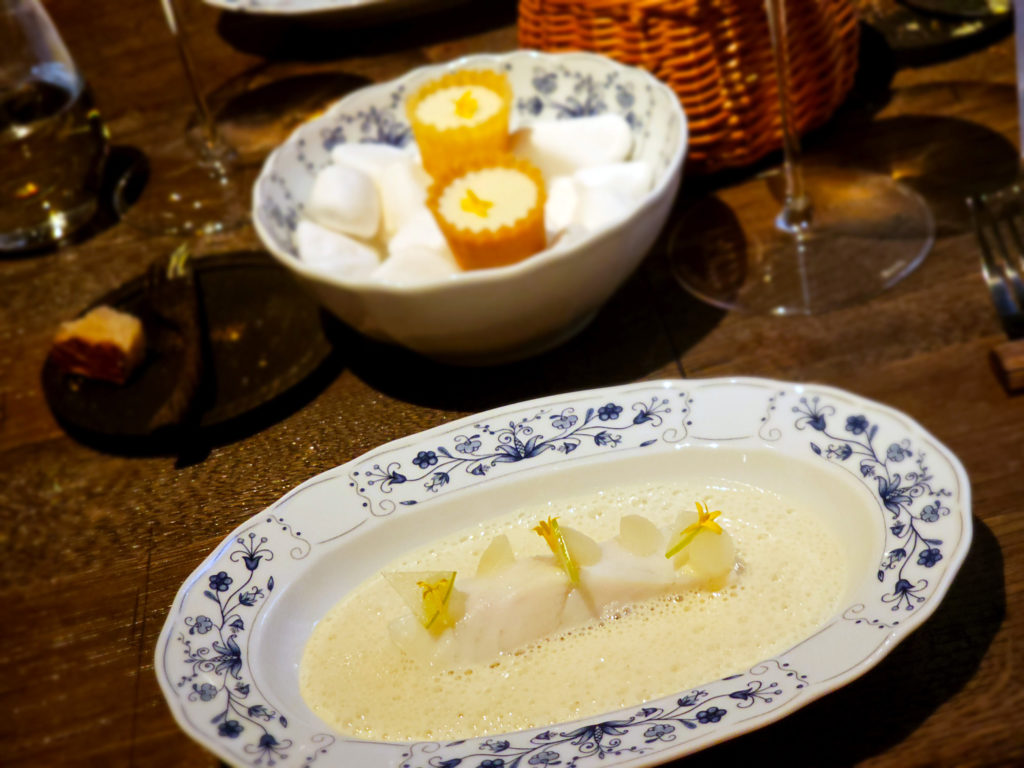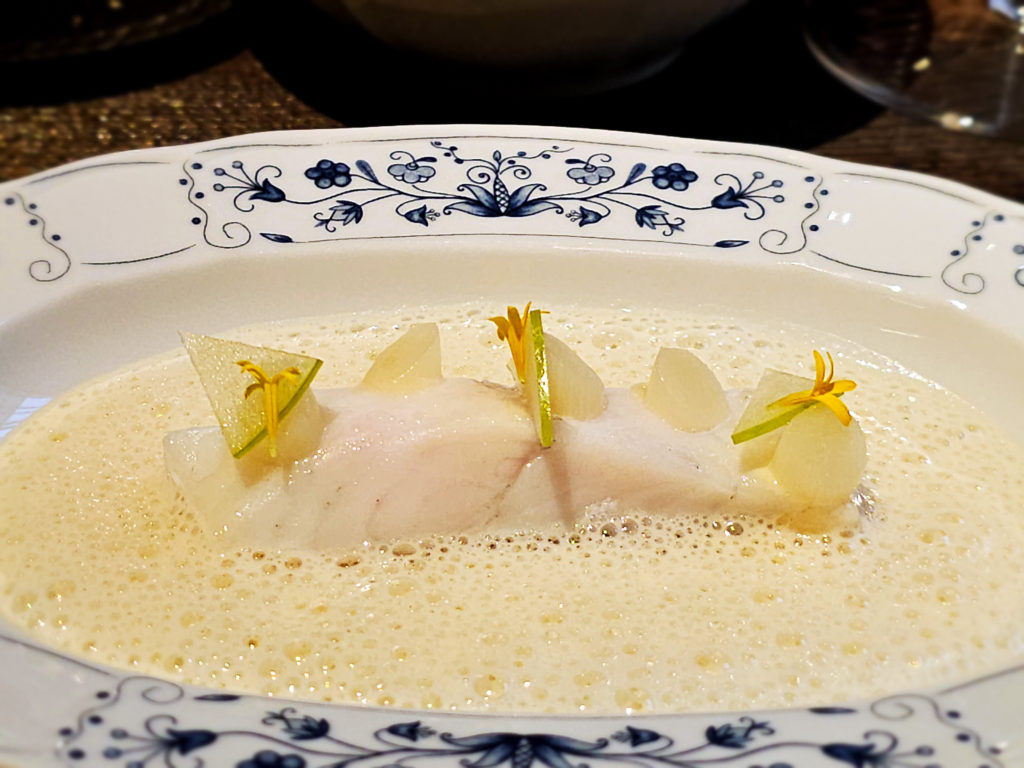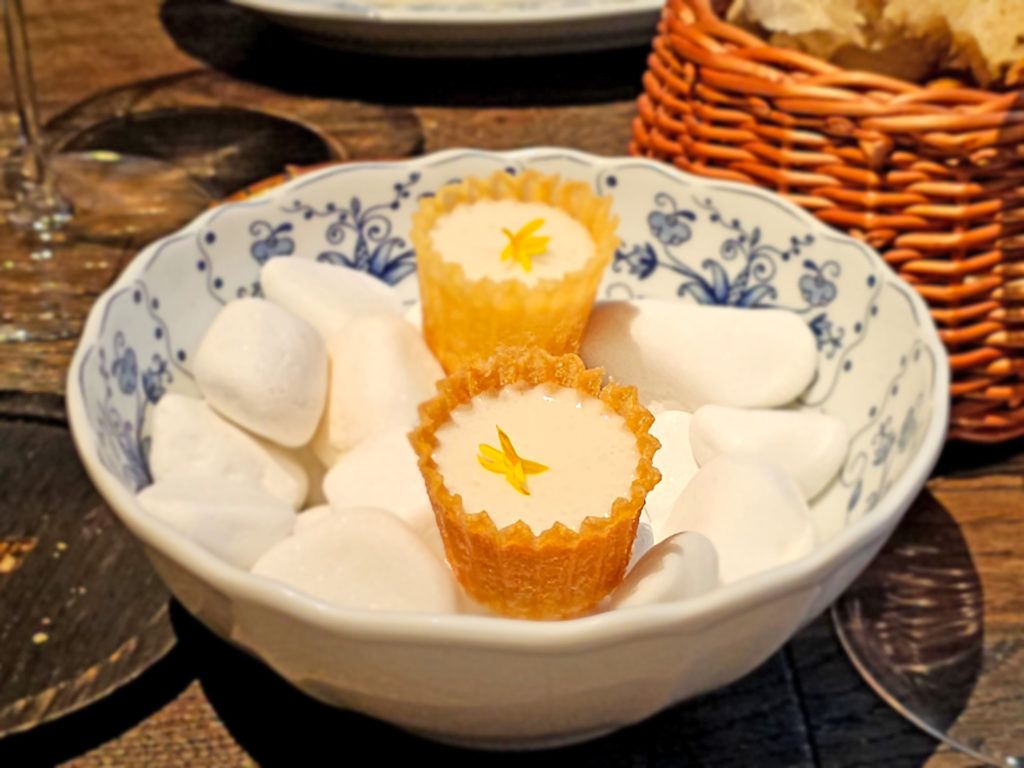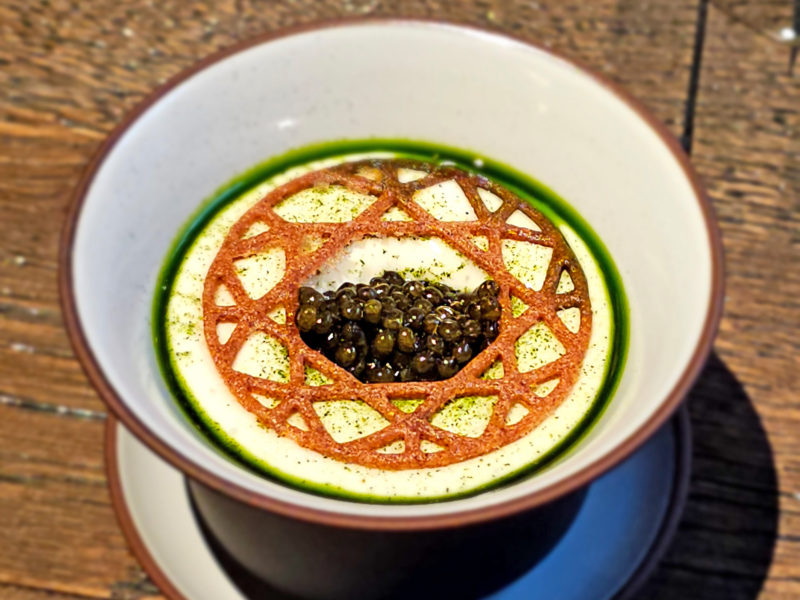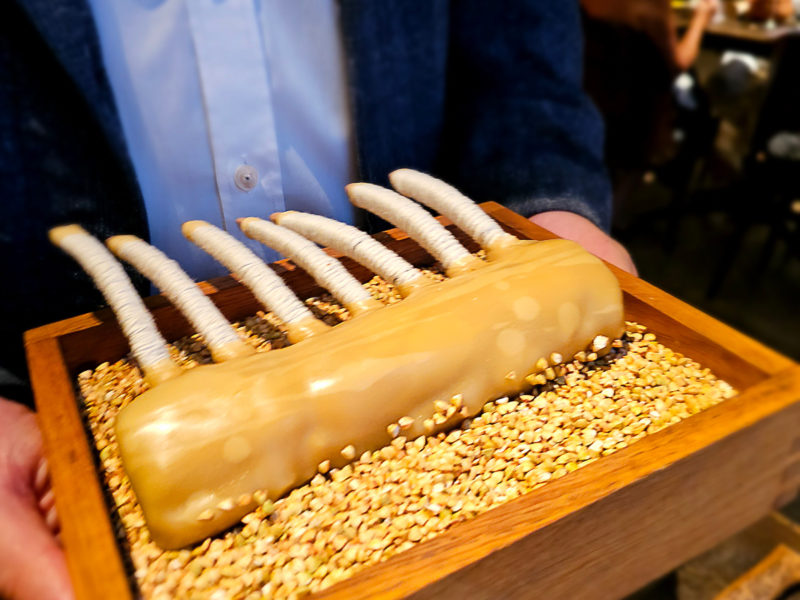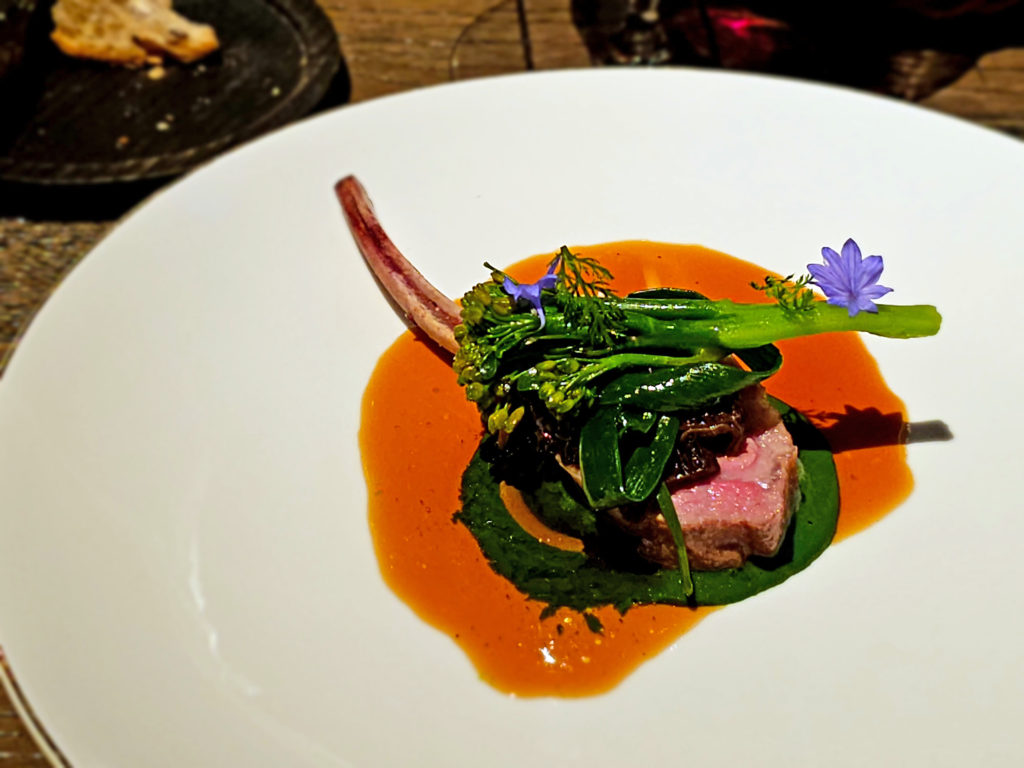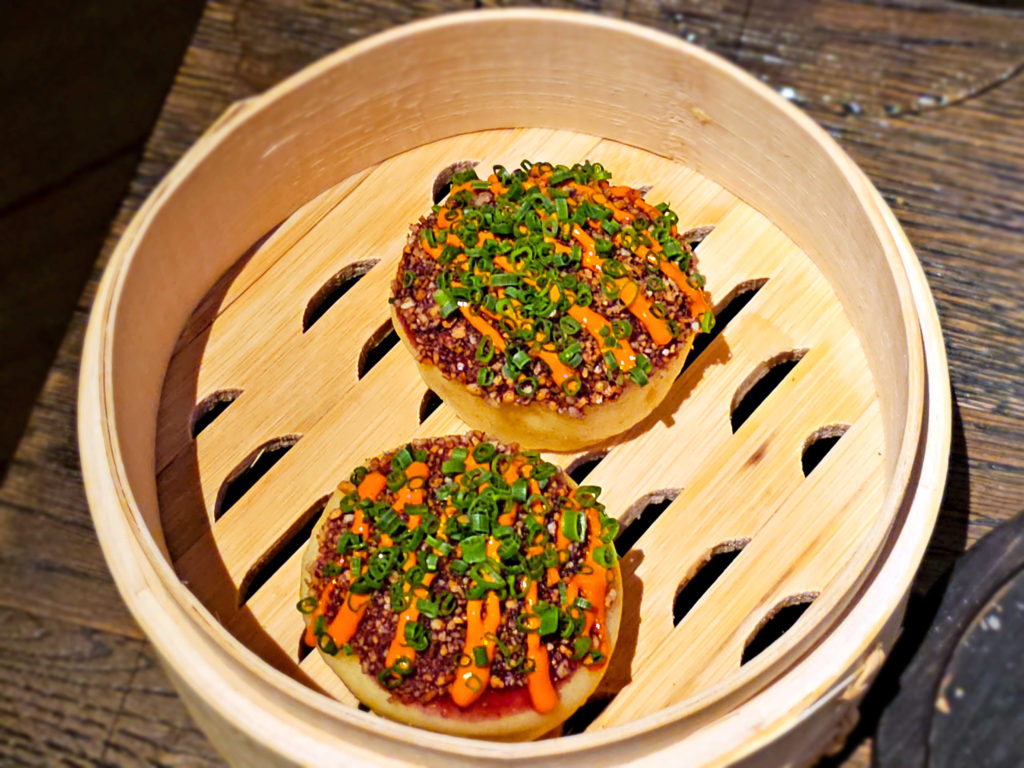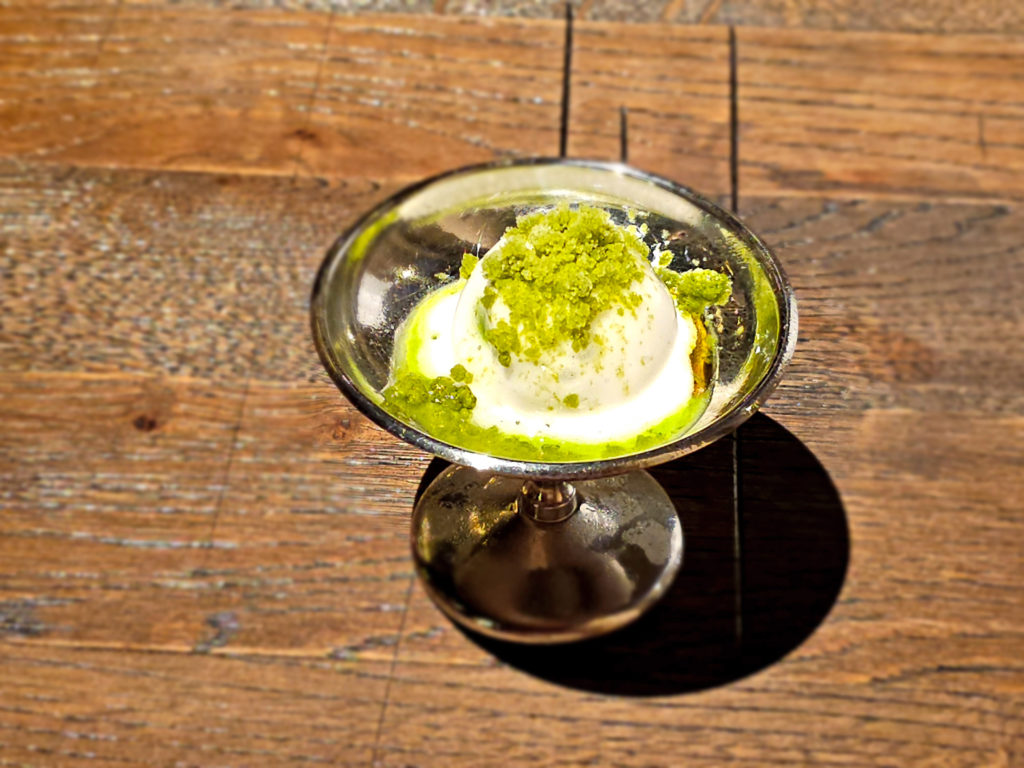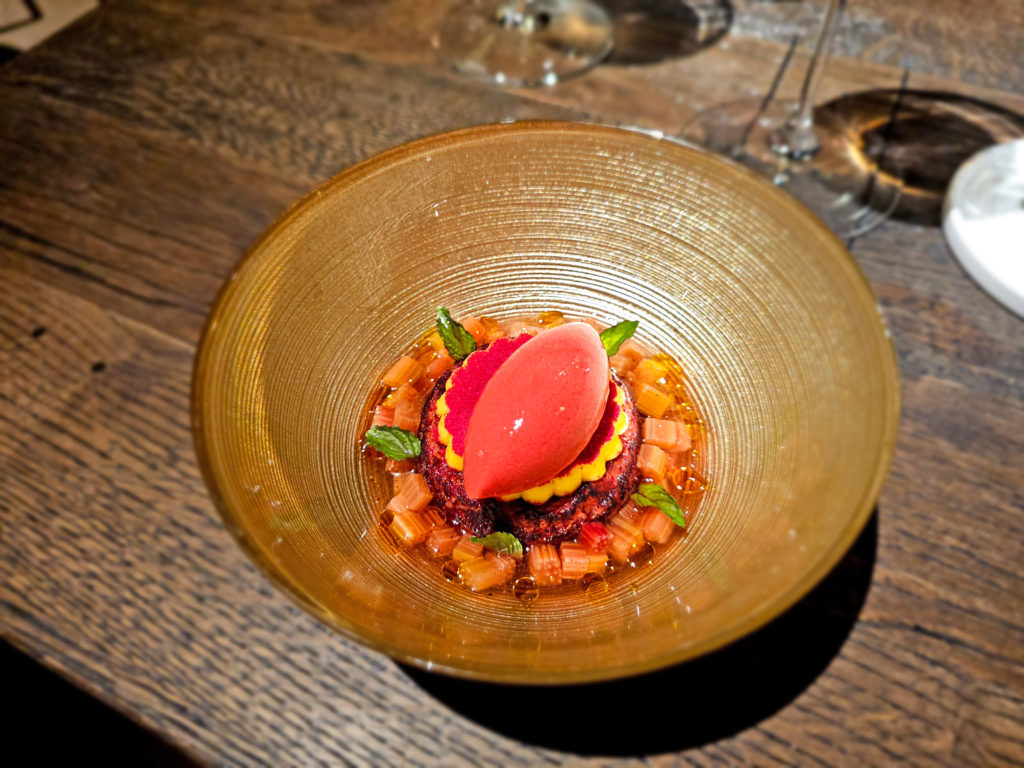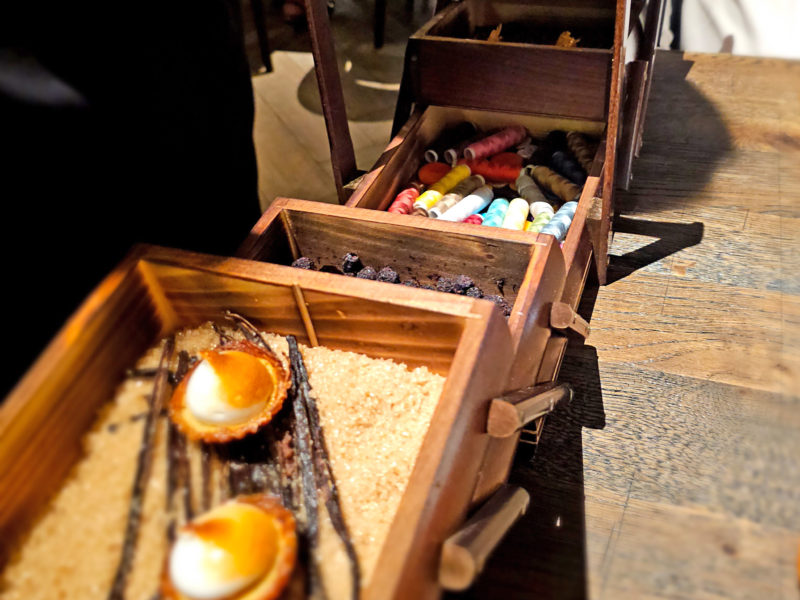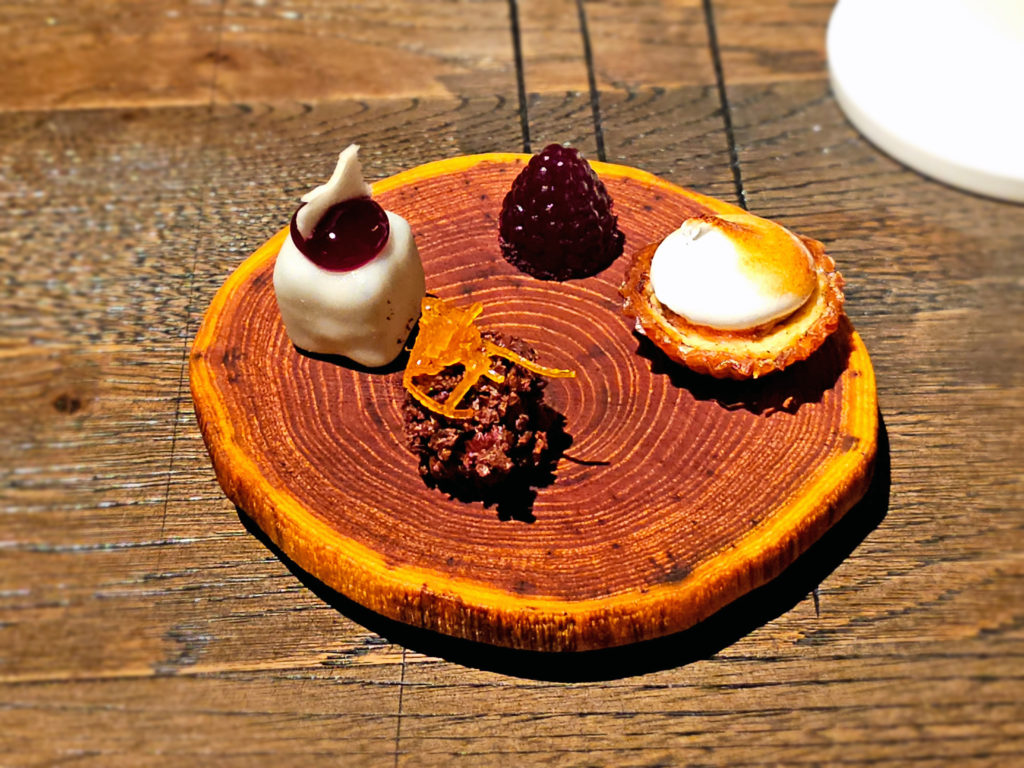Bottiglieria 1881 is the only restaurant in Poland awarded two Michelin stars. Such a promise, as it were, made by the Michelin inspectors, heightens the appetite for an extraordinary culinary experience. We can definitely confirm that our appetite was fully satisfied. Moreover, over time we have observed how the talent and skills of the Bottiglieria team continue to mature, allowing guests to experience increasingly refined flavors.
The restaurant is located in a tenement house on a side street leading to Wolnica Square in Kraków’s Kazimierz district. The year 1881 in the restaurant’s name is no coincidence—it is the year the building was constructed. The name Bottiglieria, on the other hand, refers to a wine shop. The interior of the restaurant is quite simple. Wood dominates the décor, including the tables. Their decoration is almost minimalist—there are no tablecloths. Dry twigs hang from the lamps. We don’t know whether this was the designer’s intention, but when we visited the interior, it brought to mind associations with Stanisław Wyspiański’s drama The Wedding and the bourgeois culture of Kraków. And while the associations are rather simple, the food we were served was exceptional. This is undoubtedly the merit of head chef Przemysław Klima, who channels his talent and creativity directly onto his guests’ plates.
When we sat down at the table, we were presented with a basket of ingredients from which the dinner had been prepared. A very nice gesture, especially for foreign guests, as it showcases the richness of products available in Poland.
We began the dinner with bubbles in the glass and oysters, ordered as an addition to the tasting menu. It’s well known that if someone likes oysters, they will always hold their own. The Gillardeau oysters we were served are characterized by a delicate flavor and a slight nutty note. A small bottle with a pipette was provided with a dressing that could be used for the oysters. But the real delicacy for us were the oysters with buttermilk and caviar. The buttermilk added a refreshing taste, and together with the caviar created a perfect creamy coating for the oyster. And that was just the beginning.
We then moved on to the snacks. The table set with beautifully arranged finger food made a stunning impression. We began with a cold cherry soup with red cabbage—slightly sweet, slightly sour, slightly salty—with a perfectly balanced flavor. Next, we tried a tartlet with pepper, sour cream, and tomato powder. The flavor was deep, slightly reminiscent of Spanish tapas—this must be what summer is supposed to taste like.
The next snack was the star of this part of the menu—a blood sausage doughnut made with Mangalica pork, served with chorizo and a pine vinaigrette. This snack delighted us with its warm interior, the deep flavor of the blood sausage, a slight spiciness from the chorizo, and the cool, refreshing mini salad placed on top.
The most beautifully presented dish was the Fabergé egg—a small porcelain box reminiscent of the goldsmith masterpieces by Peter Carl Fabergé, which concealed a quail egg stuffed with pickled mushrooms, topped with herring roe and a decoration of edible gold leaf. Despite the umami-rich additions, it was delicate in taste and is definitely best enjoyed before the intense blood sausage. Nonetheless, both the flavor and the presentation were truly delightful.
The final snack was a dumpling with a thin slice of kohlrabi instead of dough, filled with a mousse infused with a hint of mint. A perfectly refreshing and palate-cleansing end to this part of the menu.
After the snacks, we were served bread made from an 11-year-old sourdough starter used since the restaurant’s inception. It came with butter mixed with seeds. Warm bread with a crispy crust and butter is a perfect combination, but we held off from eating it, knowing how many dishes still lay ahead.
The next course was venison tartare with bone marrow and caviar, served in a caviar tin featuring the Bottiglieria logo instead of the caviar producer’s. It was suggested that we eat the tartare with a mother-of-pearl spoon, which is neutral to the flavors of the ingredients. Tartare is a regular feature on the menu and is something of a signature dish of the head chef. The delicate flavors, creamy texture from the marrow, and the lingering taste of caviar on the tongue made for a truly wonderful combination. As part of the wine pairing, we were served a Pinot Noir by Paul Lato. This was one of those pairings that stays in your memory and definitely made it onto our “top of the top” list in terms of perfection in combining wine and food. An additional element was a choux pastry with a juniper emulsion. We admit we ate it separately so as not to disturb the incredible taste of the tartare.
After such a feast, the next dish was called “trout and beetroot.” It was a trout cured in salt and spices for 24 hours, reminiscent of gravlax, served with a dumpling made from roasted yellow beetroot filled with smoked trout mousse, topped with trout roe and a dressing made from young grapes, poured directly from a small vase that had adorned the table since the start of the dinner. A true delight for fans of raw fish.
Then came the dumplings—shaped like little ears, filled with potatoes and bryndza cheese, accompanied by caramelized cabbage, fresh black summer truffles, and a white vegetable sauce made with wine. For Mr. G., they were so outstanding that he declared he could eat an entire kilogram of them.
Next, we were served fish once again. This time, it was turbot confit in butter. At the bottom of the plate was fermented turbot, topped with a creamy sauce, white asparagus, and apple. A wonderful dish, made even more special by the pairing with an exceptional wine—Marsannay from Burgundy, aged on lees in a glass barrel, allowing the terroir and limestone soil to be truly felt.
A small interlude before the main course was mizeria, or rather a creative interpretation of it. It consisted of cucumber with a sour cream sauce, mussels, dill oil, and crispy potato. Another dish that truly delighted us.
It was time for the main course: lamb aged in beeswax, just as it was once done at Atelier Amaro. The perfectly cooked meat was served with a wild garlic emulsion and fermented vegetables. The dish was accompanied by rolls with cranberries and chives, ideal for performing the Italian scarpetta.
Not every restaurant offers fresh napkins for dessert. At Bottiglieria, they were brown in color and sprayed with a rhubarb aroma. As a pre-dessert, we were served sorrel sorbet with a gin emulsion and a granita made of sorrel and gin. It was slightly dry and sour in taste, making it the perfect palate cleanser after the earlier explosion of flavors.
The dessert was inspired by the head chef’s childhood memories—specifically rhubarb with sugar, which he used to eat as a child. This dessert was a warm ruby chocolate cake served with rhubarb sorbet, macerated rhubarb, and rhubarb root oil. The dessert was pure poetry!
At the very end of the dinner, we received petit fours. They were brought to us in a wooden box typically used for storing sewing threads and other small items. The selection included a cheesecake with meringue, raspberry jelly, a coconut macaroon, and a praline made from stale bread. Even though we had no room left, we ate them all!
This dinner was perfect. We appreciated the references to Polish flavors, the use of local ingredients (such as bryndza in the dumplings or trout), including those less commonly used in cuisine, like pine or juniper, and the immense effort put into preparing each component of the dishes—aging, marinating, slow cooking at low temperatures, familiar flavors presented in new ways, or unexpected combinations of ingredients. It was also about creativity, visible for example in the use of a vase to serve one of the dressings. The wine pairing was also excellent.
The service was impeccable. Even if a napkin falls, a new one is brought before you can pick up the first. In fact, we have nothing to criticize. Thank you for a wonderful evening, and we wish Bottiglieria 1881 another Michelin star.

